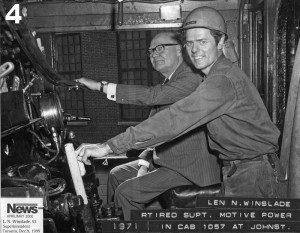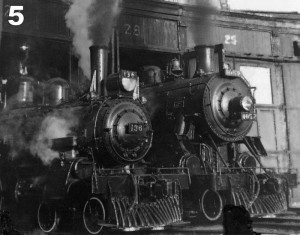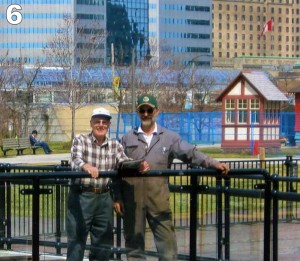Interview with John C. Clarke, John St. Locomotive Shop Foreman
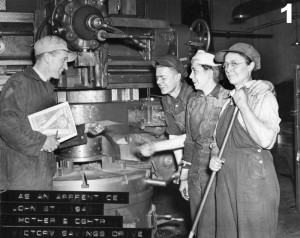
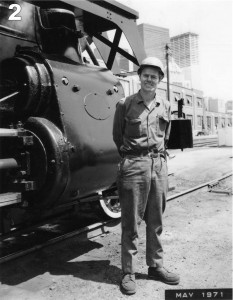
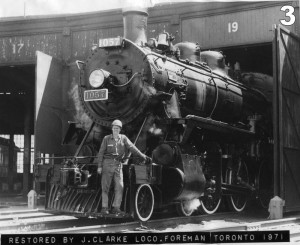 Click on each picture for a closer look!
Click on each picture for a closer look!
.
Even before work began on converting the John Street roundhouse into the Toronto Railway Heritage Centre, we realized that our high profile location would attract numerous visitors, among whom would be those who actually worked at John Street prior to its closing in 1986. We recognized this factor as a unique opportunity to fill in the sometimes sketchy history of the roundhouse as work went forward on its restoration. We also acknowledge that those who worked at the roundhouse are as important a part of Toronto’s railway history as the buildings, rolling stock and locomotives that normally attract the attention of railfans and preservationists. Many of the so-called “rivet counters” that are sometimes ridiculed in our hobby forget that it’s the human connections and stories that are of most interest to the general public. At least one of the historic plaques being installed in Roundhouse park will commemorate the employees of John Street.
.
In April 2010 a gentleman named John C. Clarke approached TRHA vice-president of operations Michael Guy and introduced himself. Mr. Clarke was the locomotive shop foreman at the roundhouse during the 1970s and has graciously shared his story and some photographs with us.
.
John C. Clarke is the third of four generations of Clarkes who have worked for the Canadian Pacific Railway. Charles L. Clarke, John’s grandfather, began the Canadian railway dynasty and was a bridge and building master for the CPR in New Brunswick for forty years. John’s father, Donald G. Clarke was a CPR express messenger for 47 years, working mostly out of Toronto. As of 2002, four out of five of John’s sons continued to work for Canadian Pacific.
.
John C. Clarke was born on June 1, 1925 and began working for the CPR at John Street as a machinist apprentice on June 1, 1942, the day he turned 18. He earned 30 cents an hour and worked six days a week with Sunday off. This probably would have been the busiest time ever in the 81-year history of the roundhouse given the incredible pressures put upon the railway during World War 2. There were 50 CPR trains a day scheduled in and out of Union Station in the summer of 1942, each of them hauled by a steam locomotive that would have needed servicing at the roundhouse. Also, during wartime, there were several special movements requiring additional steam power. John’s birthday continued to resonate in his career and he was appointed assistant foreman on June 1, 1951 on the 4 to 12 shift. He went back to day shift work on June 1, 1972 when he became the shop foreman at John Street.
.
During the 1970s, a number of steam locomotives then being readied for excursion service were restored at the roundhouse. As steam had only been finally retired at the end of the 1950s in favour of diesel power, there were still a number of Canadian Pacific employees at John Street who were familiar with these locomotives, including Mr. Clarke. As well, the roundhouse still contained the facilities and equipment necessary for this sort of restoration as other roundhouses in Canada had either been demolished or had their steam maintenance equipment removed.
.
Two of the steam locomotives whose restoration was supervised by Mr. Clarke were CPR Nos. 136 and 1057, both now belonging to the South Simcoe Railway in Tottenham. Both engines had participated in the famous triple header excursion on May 1, 1960. In 1972, No. 136 was restored for the filming of the CBC television series The National Dream, the production of which was extensively covered on this website in 2009 beginning with this TRHA News posting.
.
We’re happy to share Mr. Clarke’s story with you and we hope that many other CPR employees who worked at John Street will come forward and share theirs as well. As always, photographs are most welcome that will enable us to illustrate these chronicles on our website to the widest possible audience.
.
CAPTIONS for IMAGES
.
All images are courtesy of John C. Clarke
.
#1 – This photo was taken in 1941 during a promotion to encourage shop employees to buy Victory Bonds during World War 2. John Clarke is right of centre and this would have been shortly after he began work at John Street. Handing John the bond is General Foremen Bob Scott. The women on the right were a mother and daughter who were employed cleaning locomotives in the shop. Thousands of women worked at railway jobs during the war while the men who normally occupied these positions were away fighting. This is the first photographic evidence we’ve seen of women in the locomotive shops during the war.
.
#2 – John C. Clarke just before he was appointed shop foreman at the John Street roundhouse.
.
#3 – John Clarke on the pilot of No. 1057 at stall 19 of the roundhouse. Stall 17 on the left is the westernmost bay of the three occupied by the TRHC. The wooden passenger that can be just seen on the far left may have been one of the cars restored for the filming of the National Dream, the production of which was extensively covered on this website in a multipart series beginning March 11, 2009. Photo by John Mellow.
.
#4 – John Clarke in the cab of 1057 at John Street in 1971. The gentleman with him is retired CPR Superintendent of Motive Power Len. N. Winslade. The clipping on the bottom left from the CPR News is apparently a notice of Mr. Winslade’s passing in 1999 at the ripe age of 93.
.
#5 – 136 & 1057 poking out of stalls 27 and 28 at the roundhouse on May 4, 1974. Photo by Bob Donaldson
.
#6 – John Clarke and TRHA’s Michael Guy on the turntable at John Street in
April 2010
.
Posting by Derek Boles, Railway Historian; Pictures from John Clarke with orginal attributions noted above where known
.
